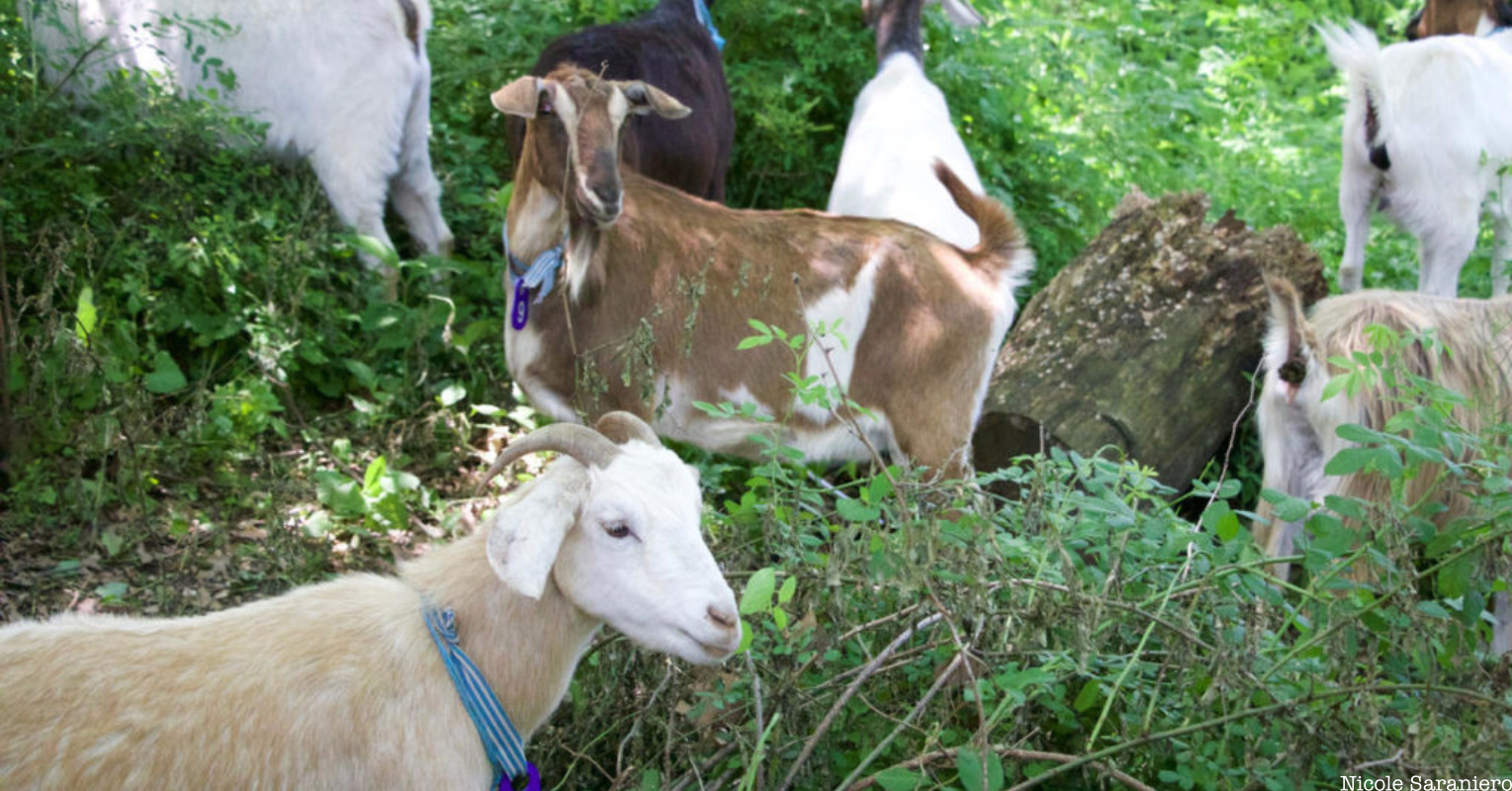Why hire a human professional when nature’s greatest weeding team accepts payment in leaves? In order to further plans for Riverside Park‘s compost initiative, the park is bringing back a herd of goats for the fourth year on the job. The four-legged team will help keep invasive species overgrowth at bay at the new compost compound. To welcome these sustainability “am-baaa-ssadors” back, Riverside Park will host a small festival to kick off the new Goatham season.
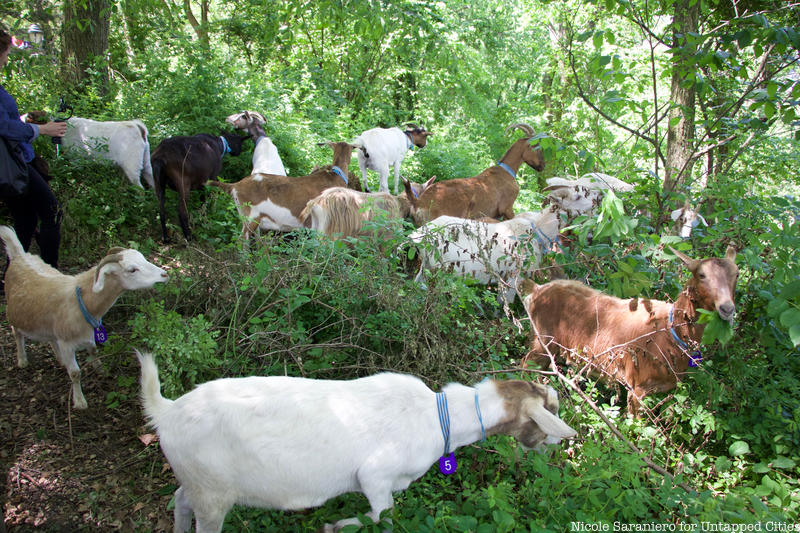
The big unveiling will be held on Friday, July 7th, from 11 AM to 2 PM and is open to the public. The event will be complete with a variety of activities including local vendor booths, live music, arts and crafts, and our favorite, plenty of goat-themed merchandise. It will also showcase the four “goats of honor,” Cowgirl, Chico, Charlie, and Mallomar, as they present the esteemed ribbon-chewing ceremony at the new 95th Street Compost Compound. The fenced-in area the goats will occupy is nestled between 119th and 122nd Street near Morningside Heights in Upper Manhattan.
These goats are not just cute to watch as they traverse the sloping terrain, but they are also remarkably helpful. They’ll eat up to 25% of their body weight in vegetation each day. The park’s Woodland Restoration Initiative staff and volunteers have spent over 15 years attempting to keep invasive species like mugwort, porcelain berry, and poison ivy at bay in the 2-acre area. Amazingly, the furry helpers can on those invasive species in ways humans can’t.
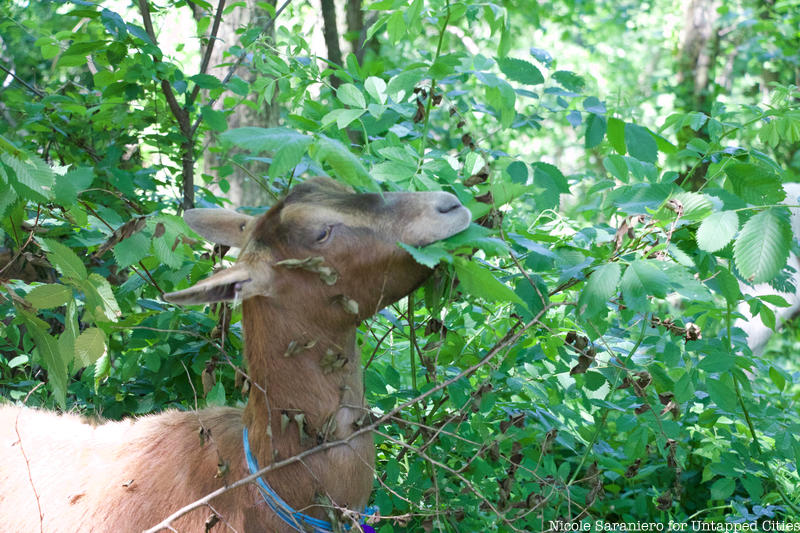
Not only can goats eat nearly continuously for hours at a time, but they can also eat plants like poison ivy that humans would have a much harder time handling. Better yet, they eat the plants repeatedly down to the roots, which stunts the plant’s growth and makes it harder for them to grow back. The goal of the initiative is that the goats can prevent the plants from growing back for good, leaving room to plant native, ecologically desirable plants in their place. As Riverside Park puts it, the goats are a “sustainable, chemical-free method of removing invasive species from a landscape.”
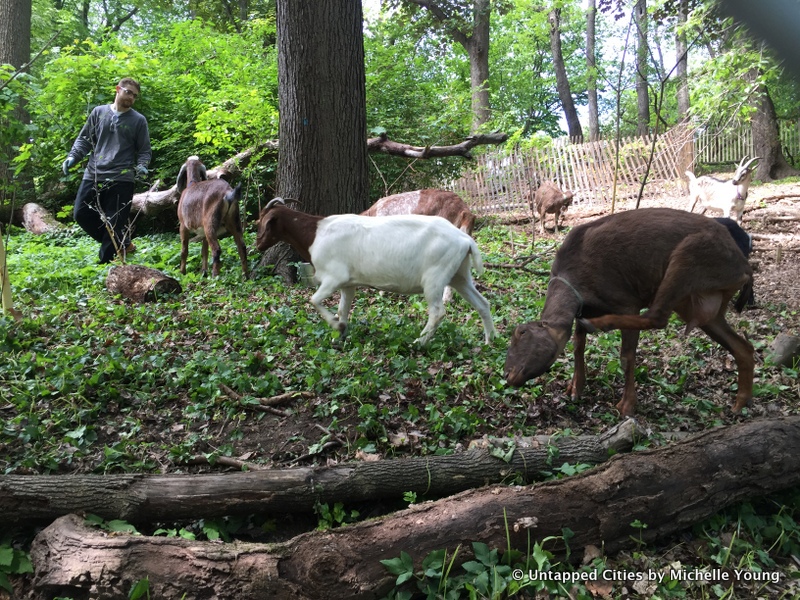
Another free benefit of the goats, in addition to removing invasive species, is that their fecal matter helps to add nutrients to the soil as they wander, making these animals a multifaceted win for the park. In fact, goats have always been a unique part of the historical fabric of New York City. The word “Gotham” has been used as a nickname for New York City for over 200 years (no, it did not actually originate from the Batman comics). The term originally surfaced in 1807 when American writer Washington Irving likened the city to the medieval English village with the same name in his satirical magazine. The village had received the name, meaning “goat home” in Old English, and Irving compared the village’s “foolish” residents to those living in New York City at the time. You can read more about the origins of “Gotham” here!
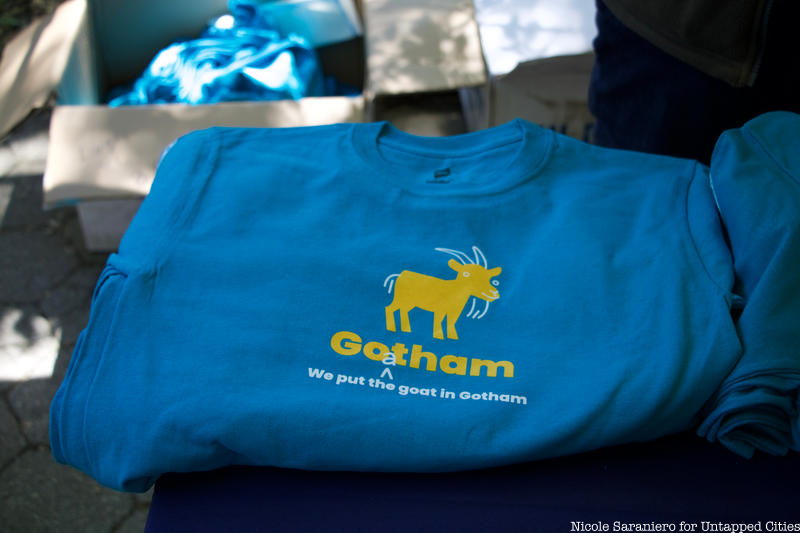
While there have been plenty of goat landscaping projects from Green Goats in New York City – including at Fort Wadsworth on Staten Island and Brooklyn Bridge Park – NYC is not the only home to goat-centered sustainability initiatives. In fact, companies like Gap Mountain Goats in New Hampshire and We Rent Goats in Idaho have turned massive percentages of their farms into goat rental businesses to help nearby farmers clear their land. Another example is the nonprofit City Grazing in San Fransisco, which rescues and adopts goats that otherwise may have been neglected in order to give them new lives. Their aim is to create a goat-grazing experience all over the Bay Area that brings urban residents a little closer to nature and sustainable upkeep alternatives.
Next, check out the Top 10 Secrets of Riverside Park.






